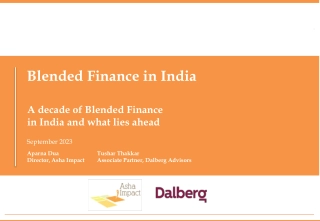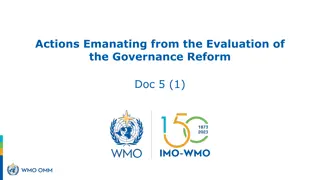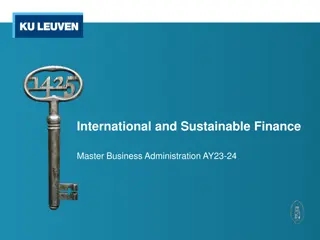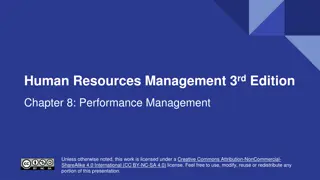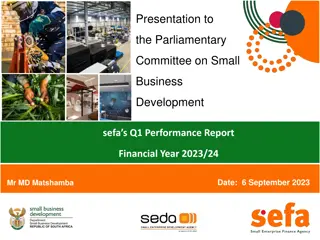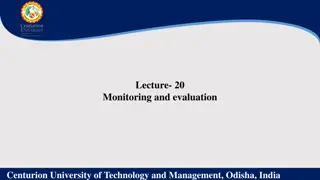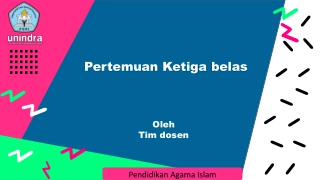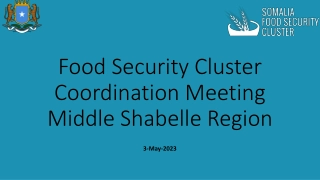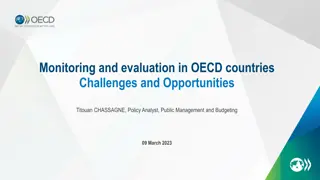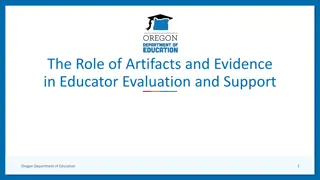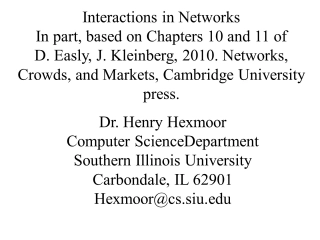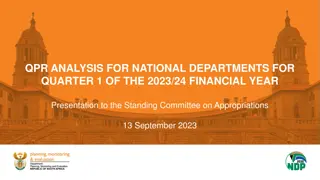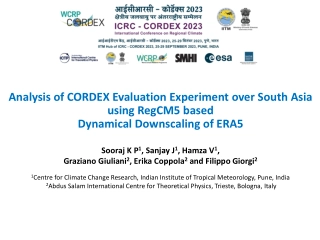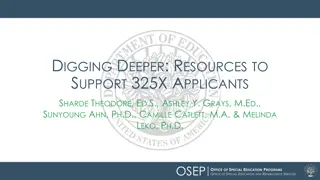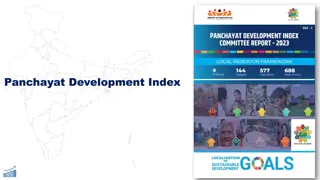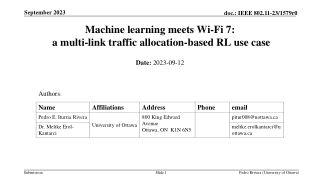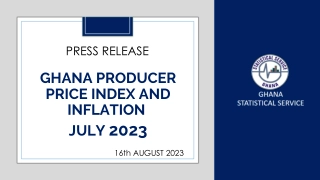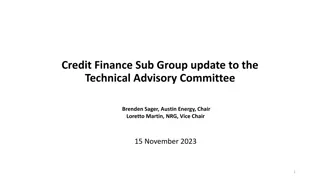Maqasid al-Shariah-Based Performance Evaluation Index for Islamic Social Finance Institutions
This study focuses on developing a performance evaluation index for Islamic social finance institutions (ISFIs) based on Maqasid al-Shariah to better measure their performance beyond just financial aspects. The aim is to analyze how far ISFIs have accomplished Maqasid during their operations through the Maqasid al-Shariah Index (MSI). The research aims to identify a theoretical framework, dimensions, elements, and measures necessary for operationalizing Maqasid components to develop a Maqasid-based performance evaluation index for ISFIs, particularly Zakat Institutions in Malaysia.
Maqasid al-Shariah-Based Performance Evaluation Index for Islamic Social Finance Institutions
PowerPoint presentation about 'Maqasid al-Shariah-Based Performance Evaluation Index for Islamic Social Finance Institutions'. This presentation describes the topic on This study focuses on developing a performance evaluation index for Islamic social finance institutions (ISFIs) based on Maqasid al-Shariah to better measure their performance beyond just financial aspects. The aim is to analyze how far ISFIs have accomplished Maqasid during their operations through the Maqasid al-Shariah Index (MSI). The research aims to identify a theoretical framework, dimensions, elements, and measures necessary for operationalizing Maqasid components to develop a Maqasid-based performance evaluation index for ISFIs, particularly Zakat Institutions in Malaysia.. Download this presentation absolutely free.
Presentation Transcript
PERFORMANCE EVALUATION INDEX FOR ISLAMIC SOCIAL FINANCE INSTITUTIONS (ISFIs) BASED ON MAQASID AL-SHARIAH Dr. Mohamed Asmy Bin Mohd Thas Thaker Dr. Mustafa Omar Mohammed Dr. Aslam Akbar Prof. Dr. Jarita Duasa
Introduction Most of the ISFIs performance studies focus on measuring financial performance based on the conventional aspect of performance, without focusing on the Maqa sid. Besides, these conventional yardsticks are not adequate to measure the Maqa sid-based performance that can truly measure the identity of ISFIs. Therefore, it is essential to examine the ISFIs with the proper tools, such as the Maqa sid al-Shari ah Index (MSI), that was first developed by Mohammed, Razak, and Taib (2008).
Contd This study aims to analyse the performance of ISFIs based on Maqa sid al-Shari ah. The aim is to extend the analysis of the MSI, that is employed in the literature, to determine how far ISFIs have gone toward accomplishing Maqa sid during its operationalisation.
Research Questions i. What could be an appropriate framework to measure the performance of Islamic social finance institutions particularly Zakat Institutions based on Maqasid al-Shari ah? ii. What are the variables that should be selected to operationalize the Maqasid components? iii. How to prioritize the variables in each Maqasid component according to the level of importance? iv. How can the Maqasid-based index be developed and used to measure the performance of Islamic social finance institutions particularly Zakat Institutions?
Research Objectives The study is therefore, aspires to achieve the following objectives: i. To identify an appropriate Maqasid al-Shari ah based theoretical framework to develop a Maqasid based performance evaluation index (MPEI) for Islamic social finance institutions particularly Zakat Institutions. ii. To identify the dimensions, elements and measures necessary to operationalize the components of Maqasid al-Shari ah for MPEI. iii. To confirm and validate the dimensions, elements and measures under each Maqasid component. To establish the priority of the components and their variables representing the MPEI framework. v. To finally develop and test the MPEI to measure the performance of selected Zakat Institutions in Malaysia.
Literature Review Al Ghazali Maqasid Framework Performance measurement of Zakat institutions (see full paper)
Figure 1: Framework of Al Ghazalis Maqasid Theory Maslahah Necessity Complement Embellishment Preservation of Religion Preservation of Life Preservation of Intellect Preservation of Lineage Preservation of Wealth Based on Figure 1 above, al-Ghazali s theory of Maslahah has three main elements, namely, necessity, complement and embellishment. The necessity element is further classified into five essential sub elements, which are the preservations of religion, life, intellect, progeny, and wealth. As mentioned above, many Muslim scholars - past and present - have benefited from al-Ghazali s theory in their works. Among them are past scholars of Islamic jurisprudence or usul al-Fiqh such as Fakhr al-Din al-Razi (d.1209 A.D), Sayf l-Din al-Amidi (d.1233 A.D), Al- Baydhawi (d. 1286), Al-Isnawi (d. 1370 A.D) and Ibn al-Subki (d.1369 A.D) have used al- Ghazali s theoretical framework.
Research Method Qualitative and Quantitative approaches. Interview, library research, annual reports
Stage 1 Model Identification Figure 1: Framework of Al Ghazali s Maqasid Theory Maslahah Necessity Complement Embellishment Preservation of Religion Preservation of Life Preservation of Intellect Preservation of Lineage Preservation of Wealth Based on Figure 1 above, al-Ghazali s theory of Maslahah has three main elements, namely, necessity, complement and embellishment. The necessity element is further classified into five essential sub elements, which are the preservations of religion, life, intellect, progeny, and wealth. As mentioned above, many Muslim scholars - past and present - have benefited from al-Ghazali s theory in their works. Among them are past scholars of Islamic jurisprudence or usul al-Fiqh such as Fakhr al-Din al-Razi (d.1209 A.D), Sayf l-Din al-Amidi (d.1233 A.D), Al- Baydhawi (d. 1286), Al-Isnawi (d. 1370 A.D) and Ibn al-Subki (d.1369 A.D) have used al- Ghazali s theoretical framework.
Stage-2- Instrument Development and Selection of Variables The aim of this study is to develop an appropriate Maqasid model that can effectively measure the performance of Zakat institutions. In the previous section, the Maqasid model of Al- Ghazali s was discussed and combined with other frameworks to develop a comprehensive set of measurements for the performance of Zakat institutions. However, the five identified variables, namely, protection of religion, life, wealth, progeny and intellect are conceptually vague and they refer to the attributes of humans rather than organisations or institutions. Within this boundary, the researcher opts to choose Sekaran s (2013) method in operationalizing a concept (C) which is broken down into dimensions (D); and the dimensions then will be split Stage-2- Instrument Development and Selection of Variables measure the variables by counting the number of glasses consumed by each thirsty individual further into several measurable items or elements (E). Sekaran, he used an example of thirst as a concept (C) where when people are thirsty, they will be very likely want to drink lots of water, which is a dimension (D). Lasty, one can simply (E) to measure the degree of thirst. To illustrate, Figure 4.3 is drawn upon Sekaran s model. Figure 3: The method of operationalizing a concept Sekaran s (2013) method in operationalizing a concept (C) which is broken down into dimensions (D); and the dimensions then will be split further into several measurable items or elements (E). Concept D E E Source: Sekaran, 2013
Example Table 8: Protection of Religion, Dimensions, Elements, Measures Concepts Dimensions Elements Measures Islamic activities Islamic program Disbursement for activities Islamic program Preservation of activities / Total Zakat Religion (Hifdh collection Al-Din) Islamic education Scholarship for Disbursement for Islamic education Islamic educations / Total Zakat collection Funding Religious Development of Disbursement for institutions religious institutions Islamic program development activities / Total Zakat collection a.ii) Protection of Life (Al-Nafs) The protection of life (Al-Nafs) can be defined in various ways. One of them is preventing life from being threatened by death including protecting the body limbs from any harm and damages to ensure the continuity of life using those parts of limbs (Attia, 2010). Hence, taking preventive measures against murder, assault, suicide, infectious and deadly diseases are considered important, as well as ensuring the availability of basic needs such as food, shelter, clothing and medicine. On the other hand, Ashur (2006) considered that protection of life should also incorporate protection of human dignity, honour and human rights. His argument is supported by Atiyah (2003) who asserted that human beings have psychological needs such as dignity and honour, and that makes them different from the animals. Hence, this research attempts to operationalize Protection of Life using the framework shown in Table 9.
Stage 3- Semi-Structured Interview and Weight Assignment The selection of the interviewees or experts was made primarily due to their expertise, specializations and experience in the areas of Shariah, economics, finance and social finance. The MSI model developed was sent to 13 experts selected, in accordance with objectives of this research. The experts are from the Middle East and Malaysia, and are well versed in Islamic social finance. The experts were interviewed, and they were requested to assign weights to the components and to determine whether the performance measures are acceptable. The experts were asked to assign weights to the five objectives, various elements to the respective Shariah objectives. Besides assigning the weights, the questionnaires also solicit from the experts any comment that would enhance the understanding of Maqasid approach to the objectives of Islamic social finance and its performance measures.
Stage 4- Ratio identification After the MSI model was verified and validated by the identified experts, the authors identified the following 13 ratios (R1 to R13) corresponding to each element in the model. 1. Disbursement for Islamic program activities / Total Zakat collection 2. Disbursement for Islamic education / Total Zakat collection 3. Disbursement for Islamic program activities / Total Zakat collection 4. Disbursement for financial assistance / Total Zakat collection 5. Disbursement for healthcare assistance / Total Zakat collection 6. Disbursement for debt relief assistance / Total Zakat collection 7. Disbursement for emergency relief assistance / Total Zakat collection 8. Disbursement for courses and training assistance / Total Zakat collection 9. Disbursement for scholarship assistance / Total Zakat collection 10. Disbursement for family rehabilitation assistance / Total Zakat collection 11. Disbursement for family related HIV/Drug program assistance / Total Zakat collection 12. Disbursement for house building and maintenance assistance / Total Zakat collection 13. Disbursement for business capital assistance / Total Zakat collection
Contd (i) Validation of the Model and Underlying Variables The Verification by Experts through Survey As previously stated, questionnaires were sent to 12 experts in the areas of Islamic social finance and Islamic economics to verify the instrument developed for the study. Almost all the experts have verified the appropriateness of the instrument developed. Assigning Weights to the Instrument Accordingly, twelve questionnaires were received from 12 experts who assigned specific weights to the five Shariah objectives and the 13 elements.
Stage 5 - Index Development and Empirical Test After completing the processes of identifying the variables and assigning the weights, an index called Maqasid Al Shariah Index (MSI) is developed using a simple mathematical equation. The index development has fulfilled the final objective of the research. Then, the data collected from the annual reports are utilised to test the model.
4.0RESEARCH FINDINGS AND DISCUSSION 4.1 Introduction The previous section discussed the methodology used in this study, which includes the sampling techniques, computation of data, and testing of the models. This section presents the major findings and results of the study. 4.2 Descriptive Statistics of the MSI Model As previously discussed, the PMMS model comprises two main components and three sub- components. The two main components are the Maqasid Index and the five Shariah objectives. The three sub-components comprise 13 dimensions, 13 elements and 13 ratios. Table 15 below reproduces the MSI model and its related main and sub-components. Table 15: MSI Components No Main Sub Components Components Research Findings And Discussion Shariah Number Of Number Of Number Of Objectives Dimensions Elements Ratios 1 Religion 3 3 3 2 Life 4 4 4 3 Intellect 2 2 2 4 Lineage 2 2 2 5 Wealth 2 2 2 Maqasid Index 13 13 13 The table shows the relationship between the two main components and, the relationships between the five Shariah objectives and the three sub- components. With regard to the two main components, the Maqasid Index represents the sum of the five Shariah objectives (religion, life, aql, lineage and wealth) in column 2. For the second category of relationship, the five Shariah objectives were operationalized into their respective 13 dimensions (column 3). The dimensions were further operationalized into 13 elements (column 4) and the elements were measured by 13 ratios (column 5) Computation of the Weighted Ratios 4.3 After obtaining the data and computing the 13 ratios stated above, the researcher utilized Hwang and Yoon s (1981) simple additive weighting method (SAW) for the weighting, aggregating and ranking processes. According to Hwang and Yoon (1981), SAW method is
probably the most widely used method of Multiple Attribute Decision-making Methods and Applications (MADM), and it works as follows. The Decision Maker (DM) identifies the attributes and intra-attribute values. In this study, the attributes are the five Shariah objectives and, the intra-attributes are the 13 elements and the 13 ratios. The DM then assigns a weight to each attribute and intra-attribute identified. Accordingly, the values for the 13 ratios were derived from the annual reports of the LZS (2015 - 2019) as discussed previously. Meanwhile, the weights for the 5 Shariah objectives and the 13 elements have been assigned by the Shariah experts. The average weights for each item assigned by the 13 experts (as shown in Appendix 1, 2, 3, and 4), are reproduced in Table 4.1 below to help facilitate the understanding of the way the weighted ratios are computed in the following paragraphs. Table 16: Average Weight For The Shariah Objectives And Its Elements Assigned By The Experts Shariah Average Weight Elements Average Objectives (Out of 1) Weight (Out of 1) Religion 0.33 E1. Islamic program 0.34 E2.Scholarship For Islamic Education 0.33 E3.Development Of Religious Institutions 0.34 Total 1 Computation of the Weighted Ratios Life 0.22 E4.Financial Assistance 0.33 E5. Healthcare Assistance 0.29 E6. Debt Relief Assistance 0.20 E7.Disaster Aid 0.18 Total 1 Intellect 0.13 E8.Courses & Training 0.5 E9. Education Scholarship 0.5 Total 1 Lineage 0.14 E10. Family Rehabilitation Program 0.61 E11. Family Related Hiv/Drug Program 0.39 Total 1 Wealth 0.18 E12. House Building/Maintenance 0.4 E13. Business Capital 0.6 Total 1 Total 1
After securing all the necessary data the DM then obtains the weighted ratio for LZS by multiplying the scale rating for each attribute corresponding to the intra-attributes. The relationships between the 5 Shariah objectives and their weights, the 13 elements and their weights and the 13 ratios as presented in Table 17 below. Table 17: The Relationship between Shariah Objectives, Elements and Ratios Shariah Weight of Weight of Ratios (R) Weighted Ratios Objectives (SO) Shariah Elements (WE) (c) (WR) Objectives (b) (axbxc) (WSO) (a) Religion WSO1 (0.33) WE1(0.34) R1 WR1 WE2 (0.33) R2 WR2 Relationship between Shariah Objectives Elements and Ratios WE3 (0.34) R3 WR3 Life WSO2 (0.22) WE4 (0.33) R4 WR4 WE5 (0.29) R5 WR5 WE6 (0.20) R6 WR6 WE7 (0.18) R7 WR7 Intellect WSO3 (0.13) WE8 (0.50) R8 WR8 WE9 (0.50) R9 WR9 Lineage WSO4 (0.14) WE10 (0.61) R10 WR10 WE11 (0.39) R11 WR11 Wealth WSO5 (0.18) WE12 (0.40) R12 WR12 WE (0.60) R13 WR13 Based on Table 17 above, WS01 - WS05 denote weighted Shariah objectives 1- 5, WE1 - WE13 are the weighted elements 1-13, R1-R13 are the ratios calculated from the annual reports, WR1-WR13 are the weighted ratios 1-13 and the figures in the parentheses corresponding to WS01 - WS05 and WE1 - WE13 are the actual average weights provided by the experts. Thus in the light of Table 17 above, each of the 13 ratios (R1-R13) was multiplied by the weight of the corresponding element (WE1-WE13) and the weight of the corresponding Shariah objective (WSO1-WSO5). The first three Shariah objectives (Religion), Islamic program activities, scholarship, and development of religious institutions, are represented by the first three ratios R1, R2, and R3, respectively and they correspond to the first three weighted elements WE1, WE2, and WE3. Hence, R1 is multiplied by the weight of the corresponding element WE1 and the weight of the corresponding first Shariah objective WSO1, which results in the weighted ratio1 (WR1).
Similarly, R2 is multiplied by WE2 and WSO1which gives a product WR2. In the same way, the following four ratios were multiplied by the weights of their corresponding four elements and then by the weight of the second Shariah objective. This resulted in four weighted ratios. The same process was applied to all ratios and Shariah objectives, which were multiplied by the weights of their corresponding elements and by the weight of the Shariah objective. Therefore, altogether 13 weighted ratios were computed. The following sub-subsection explains how the 13 weighted ratios (WR1-WR13) are used to compute the respective five Shariah objective. 4.4 Computation of the Five Shariah Objectives The sum of the first three weighted ratios (WR1 + WR2 + WR3) gives the measure of the first Shariah objective, religion. Likewise, the sum of WR4, WR5, WR6 and WR7 results in the measurement for the second objective, life. The sum of WR8 and WR 9 gives the measurement for the third objective, intellect. Meanwhile the sum of WR10 and WR11 gives the Computation of the Five Shariah Objectives measurement for the fourth objective, lineage. Finally, the fifth objective, wealth is measured by the sum of the last two weighted ratios, WR12 to WR13. Hence, mathematically, the values of the five Shariah objectives can be computed as follows. Assume the first Shariah objective is denoted by SO1. Therefore, the value of SO1 is computed as: (SO1) = WSO1 X WE1 X R1 + WSO1 X WE2 X R2 + WSO1 X WE3 X R3 or WSO1 (WE1 X R1+ WE2 X R2 + WE3 X R3) Where, (SO1) denotes the 1st Shariah Objective, i.e., Hifdh Al Din (Religion) WSO1 is the weight assigned to the 1st Shariah Objectives (See Table 17 above) WE1 denotes the weight assigned to the first element of the 1st Objective (Table 17) WE2 denotes the weight assigned to the second element of the 1st Objective (Table 17) WE3 denotes the weight assigned to the third element of the 1st Objective (Table 17) R1 is the value of ratio corresponding to the first element of SO1 R2 is the value of ratio corresponding to the second element of SO1 R3 is the value of ratio corresponding to the third element of SO1 Furthermore, (SO1) = WR1+WR2+WR3 Where, WR1 = WSO1 x WE1 x R1 WR2 = WSO1 x WE2 x R2 (7) (8) (9) (10) 42 WR3= WSO1 x WE3 x R3 (11) Where, WR1, WR2, and WR3 denote the weighted ratios corresponding to elements 1, 2, and 3 of SO1, respectively. Similarly, the second Shariah objective is denoted by SO2. Therefore, (SO2) = WSO2 X WE4 X R4 + WSO2 X WE5 X R5 + WSO2 X WE6 X R6 + WSO2 X WE7 X R7 or WSO2 (WE4 X R4+ WE5 X R5 + WE6 X R6 + WE7 X R7) (12) Where, (SO2) denotes the 2nd Shariah Objective, i.e., i.e., Hifdh Al Nafs (life) WSO2 is the weight assigned to the 2nd Shariah Objective (See Table 17) WE4 denotes the weight assigned to the 4th element relative to the 2nd Objective (Table 17) WE5 denotes the weight assigned to the 5th element relative to the 2nd Objective (Table 17) WE6 denotes the weight assigned to the 6th element relative to the 2nd Objective (Table 17) WE7 denotes the weight assigned to the 7th element relative to the 2nd Objective (Table 17) R4 is the value of ratio corresponding to the 4th element relative to SO2 R5 is the value of ratio corresponding to the 5th element relative to SO2 R6 is the value of ratio corresponding to the 6th element relative to SO2 R7is the value of ratio corresponding to the 7th element relative to SO2 Furthermore, SO2 = WR4 + WR5 + WR6 + WR7 (13) Where, WR4 = WSO2 x WE4 x R4 (14) WR5 = WSO2 x WE5 x R5 (15) WR6 = WSO2 x WE6 x R6 (16) WR7 = WSO2 x WE7 x R7 (17) Where, WR4, WR5, WR6 and WR7 denote the weighted ratios corresponding to elements 4, 5, 6 and 7 relative to SO2, respectively.
The fifth Shariah objective is denoted by SO5. Therefore, (SO5) = WSO5 x WE12 x R12 + WSO5 x WE13 x R13 or WSO5 (WE12 x R12 + WE13 x R13) (26) Where, (SO5) denotes the 5th Shariah Objective, i.e., al- Hifdh Al Mal (Wealth) WSO5 is the weight assigned to the 5th Shariah Objectives (See Table 17) WE12 denotes the weight assigned to the 12th element relative to the 5th Objective (Table 17) WE13 denotes the weight assigned to the 13th element relative to the 5th Objective (Table 17) R12 is the value of ratio corresponding to the 12th element relative to SO5 R13 is the value of ratio corresponding to the 13th element relative to SO5 Furthermore, (SO5) = WR12 + WR13 (27) Where, WR12 = WSO5 x WE12 x R12 (28) WR13 = WSO5 x WE13 x R13 (29) Where, WR12, and WR13 denote the weighted ratios corresponding to elements 12, and 13 relative to SO5, respectively. Therefore, altogether five Shariah objectives, namely religion, life, intellect, lineage and wealth were computed for LZS in the sample. The following sub-subsection 4.3.3 explains how the five Shariah objectives are computed to produce the Maqasid Indexes of the LZS. Computation of the Maqasid Indexes 4.5 The total overall performance measures for the five Shariah objectives for LZS constitute its individual Maqasid Index (MI). Thus, MSI = (SO1) + (SO2) + (SO3) + (SO4) + (SO5) (30) In other words, the Maqasid Al Shariah Index (MSI) for the LZS is the sum of the performance measures in respect to Shariah Objective 1, Shariah Objective 2, Shariah Objective 3, Shariah Objective 4 and Shariah Objective 5. Table 18: Maqasid Index 2015 2016 2017 2018 2019 Maqasid Index 0.0548 0.0520 0.0478 0.0687 0.0630 Based on Maqasid Index as shown in Table 18, it indicates that MSI is improving in terms of its scores and reaffirms the importance of Maqasid Al Shariah in Islam and Islamic social finance such as Zakat institutions. It also reinforces the call by several Muslim scholars to The total overall performance measures for the five Shariah objectives for LZS constitute its individual Maqasid Index (MI). Thus, Computation of the Maqasid Indexes Islamic social finance institutions to adopt Maqasid elements in their activities (Iqbal, 2001) to achieve socio-economic justice. By having this measurement, it will be very important to MSI = (SO1) + (SO2) + (SO3) + (SO4) + (SO5)
CONCLUSION AND RECOMMENDATION Based on Maqasid Index as shown in Table 18, it indicates that MSI is improving in terms of its scores and reaffirms the importance of Maqasid Al Shariah in Islam and Islamic social finance such as Zakat institutions a higher MSI index indicates that the Zakat institutions (in this case LZS) contributes to the development of religion, life, intellect, lineage and wealth of the Muslim and as a result, it promotes socio-economic justice in society and complies with its ethical identity. The Maqasid Index can be implemented by Zakat institutions at the national and local level. It is intended that all parties in Zakat can measure and improve their Zakat performance, as well as increasing public understanding on Zakat contribution for socio-economic development of the country. The Maqasid Index that has been developed can be evaluated annually to compare its yearly performance. Thus, the Maqasid Index can become a gauge to the underlying changes that occur in the aspects of religion, life, intellect, lineage and life, over time.
Challenges Data Collection and availability = Scope of study focused narrowed down to Zakat institutions Availability of Experts- no response after many months etc Time constraint Conducive environment for writing report








